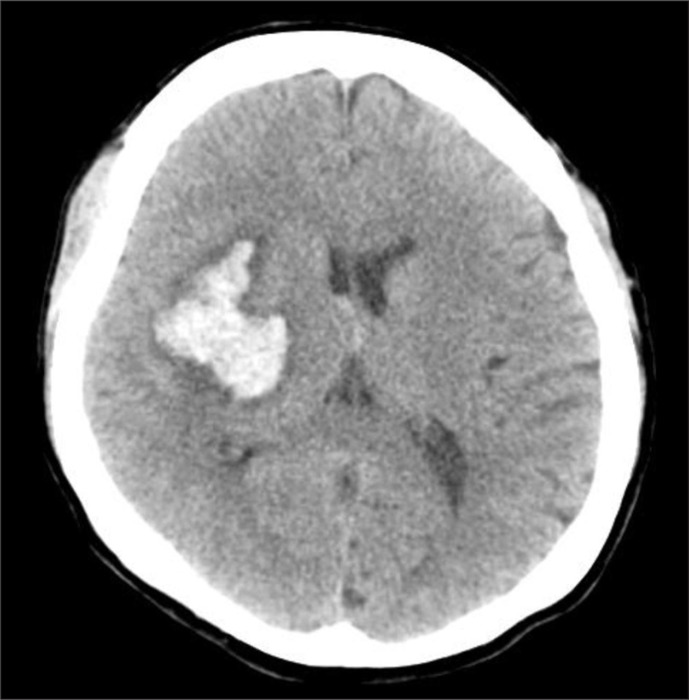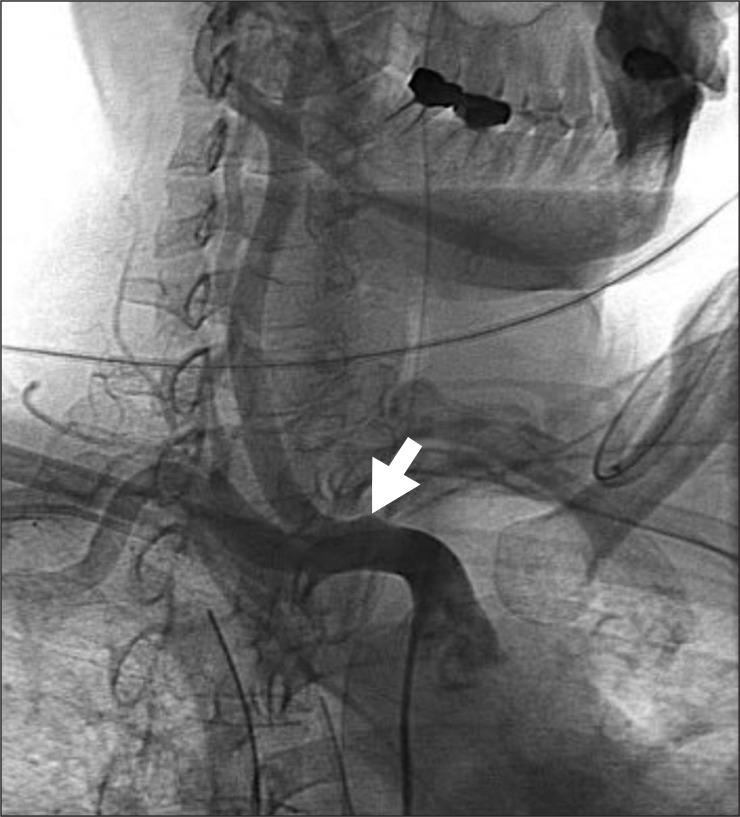Ann Rehabil Med.
2012 Dec;36(6):876-879.
Tracheo-Innominate Artery Fistula after Stroke
- Affiliations
-
- 1Department of Physical Medicine and Rehabilitation, Dong-Eui Hospital, Busan 602-702, Korea.
- 2Department of Physical Medicine and Rehabilitation, Kosin University College of Medicine, Busan 602-702, Korea. ghckim@hanmail.net
Abstract
- Tracheo-innominate artery fistula (TIAF) is rare, yet the most fatal complication after tracheostomy. In the absence of immediate diagnosis and surgical management, the mortality rate is very high, because the complication can lead to sudden massive tracheal hemorrhage. Tracheal obstruction and hypovolemic shock are the major life threatening conditions. The 46-year-old woman received tracheostomy tube insertion after stroke. Three months later, there was occurrence of active bleeding at the site of tracheostomy in the patient, who participated in comprehensive rehabilitation program. Immediately, the patient received an endotracheal tube insertion into the tracheostomy site and thus massive bleeding was controlled. The patient was transferred to the intensive care unit, where her breathing was maintained by mechanical ventilation. Based on computed tomography and laryngoscopy, no remarkable findings about TIAF were detected. Nevertheless, transfemoral angiography findings revealed that innominate artery made small luminal outpouching to trachea at the carotid artery and at the subclavian artery bifurcation level, based on which a diagnosis of TIAF was made. She had an operation for TIAF, tracheoplasty with bypass graft. Subsequently, she was discharged after 15 weeks. In the present report, we describe a case of TIAF, which can occur in the patients with tracheostomy tube during rehabilitation.
Keyword
MeSH Terms
Figure
Reference
-
1. Epstein SK. Late complications of tracheostomy. Respir Care. 2005; 50:542–549. PMID: 15807919.2. Deguchi J, Furuya T, Tanaka N, Nobori M, Seki Y, Nomura Y, Umehara I, Saito H, Miyata T. Successful management of trachea-innominate artery fistula with endovascular stent graft repair. J Vasc Surg. 2001; 33:1280–1282. PMID: 11389430.3. Black MD, Shamji FM, Todd TR. Trachea-innominate artery fistula and concomitant critical cerebrovascular disease. Ann Thorac Surg. 1996; 62:286–288. PMID: 8678666.
Article4. Kirby RR. The monitoring of mechanically ventilated patients. Int Anesthesiol Clin. 1997; 35:65–86. PMID: 9113522.
Article5. Hamano K, Kumada S, Hayashi M, Uchiyama A, Kurihara E, Tamagawa K, Enomoto S, Chou H. Hemorrhage due to tracheoarterial fistula with severe motor and intellectual disability. Pediatr Int. 2008; 50:337–340. PMID: 18533948.
Article6. Singh N, Fung A, Cole IE. Innominate artery haemorrhage following tracheostomy. Otolaryngol Head Neck Surg. 2007; 136:S68–S72. PMID: 17398348.7. Bloss RS, Ward RE. Survival after tracheoinnominate artery fistula. AM J Surg. 1980; 139:251–253. PMID: 6986802.
Article8. Thorp A, Hurt TL, Kim TY, Brown L. Tracheoinnominate artery fistula: a rare and often fatal complication of indwelling tracheostomy tubes. Pediatr Emerg Care. 2005; 21:763–766. PMID: 16280953.
- Full Text Links
- Actions
-
Cited
- CITED
-
- Close
- Share
- Similar articles
-
- Tracheo-Innominate Artery Fistula: a case report
- Successful Open Surgical Treatment of Tracheo-Innominate Artery Fistula after Endovascular Stent Graft Repair: A Case Report
- Successful Surgical Management of a Tracheo-Innominate Artery Fistula in a Patient with Duchenne Muscular Dystrophy: A Case Report
- Tracheo-Innominate Artery Fistula in Long Term Tracheostomy Patient
- Is Computerized Tomography Angiographic Surveillance Valuable for Prevention of Tracheoinnominate Artery Fistula, a Life-Threatening Complication after Tracheostomy?



